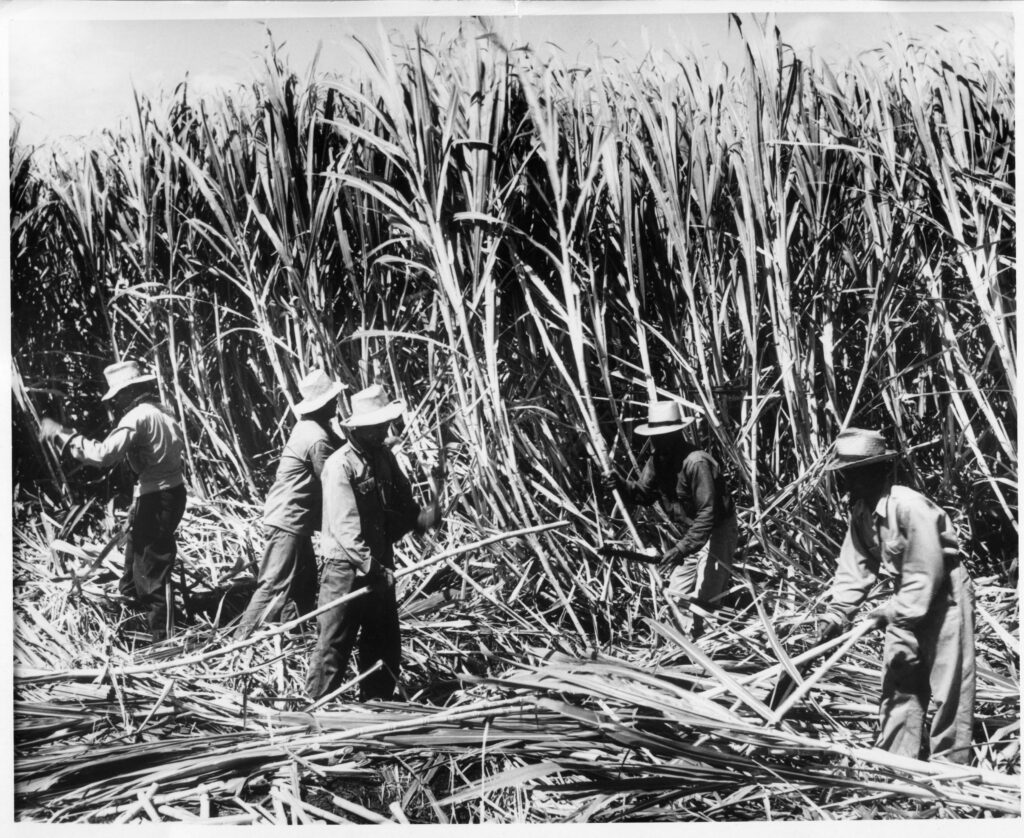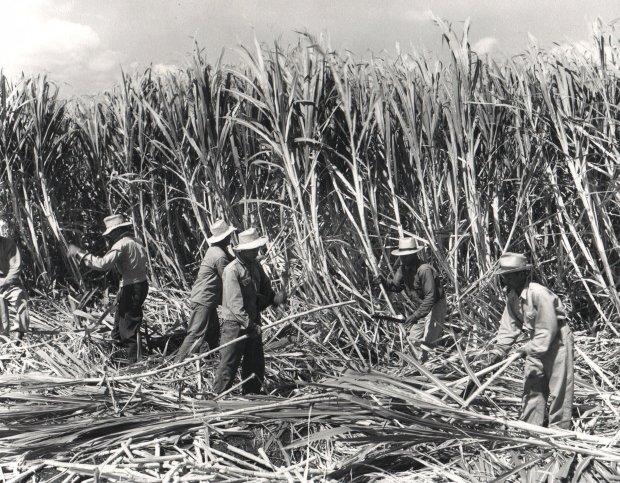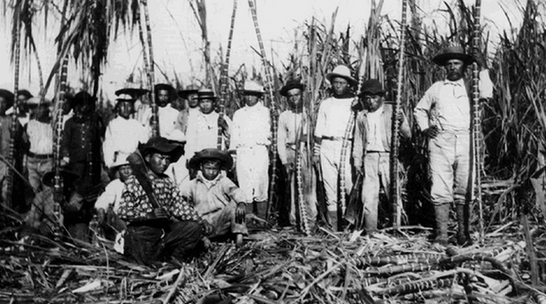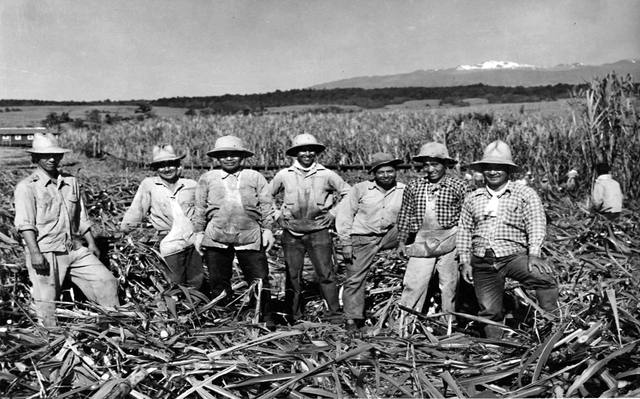If you’re looking to delve into the fascinating history of Hawaii’s plantation era, you’ve come to the right place! In this article, we’ll explore the various ways you can immerse yourself in the stories and experiences of this significant time in Hawaii’s past. From visiting historic sites and museums to participating in interactive exhibits and engaging with local communities, there are countless opportunities for you to uncover the rich heritage of Hawaii’s plantation era. So, get ready to embark on a captivating journey through time and discover the vibrant tapestry of the islands’ history.

1. Visit Historic Plantation Sites
When it comes to learning about Hawaii’s historic plantation era, one of the best ways to immerse yourself in the rich history is by visiting the various plantation sites scattered across the islands. These sites offer a firsthand look into the lives of the people who worked on the plantations and the importance of this era in Hawaii’s history.
1.1 Visit Iolani Palace
If you’re on the island of Oahu, a visit to Iolani Palace is a must. This magnificent palace was once the residence of Hawaiian monarchs and played a significant role during the plantation era. Explore the opulent rooms, stroll through the beautiful gardens, and learn about the monarchy’s relationship with the plantations.
1.2 Explore Hulihee Palace
Located on the Big Island of Hawaii, Hulihee Palace is another historical gem that offers insight into the plantation era. This seaside palace served as a vacation home for Hawaiian royalty and underwent renovations to reflect the Victorian era during the plantation era. Take a guided tour to learn more about the royal connection to the plantations and the impact they had on the local community.
1.3 Tour Waikiki Plantation Village
Waikiki Plantation Village, situated on the island of Oahu, provides an immersive experience into the daily lives of plantation workers. Explore the recreated plantation village and step back in time to witness traditional crafts, learn about the cultural practices preserved through generations, and gain a deeper understanding of the challenges faced by those who worked on the plantations.
1.4 Discover the Dole Plantation
No visit to Hawaii would be complete without a trip to the Dole Plantation on Oahu. Although mainly known for its stunning pineapple fields, this plantation offers visitors a chance to learn about the history of pineapple cultivation in Hawaii. Take a train ride through the fields, explore the Pineapple Garden Maze, and delve into the fascinating stories of the plantation workers.
1.5 Explore the Maui Sugar Museum
On the island of Maui, the Maui Sugar Museum provides an in-depth exploration of the island’s sugar industry. Discover the machinery and equipment used in sugar production, learn about the labor conditions, and gain a comprehensive understanding of the impact that sugar plantations had on the local community and economy. This museum offers a valuable insight into the history of the plantation era on Maui.
2. Explore Museums and Exhibitions
In addition to visiting historic plantation sites, exploring museums and exhibitions dedicated to preserving the history of the plantation era is another fantastic way to learn about this significant period in Hawaii’s past.
2.1 Visit the Hawaii Plantation Village
Located on the island of Oahu, the Hawaii Plantation Village is a living museum that showcases the diverse cultures and immigrant communities that worked on the plantations. Take a guided tour to explore authentic plantation homes, learn about the traditions and customs of different ethnic groups, and hear stories of resilience and perseverance.
2.2 Explore the Maui Historical Society
The Maui Historical Society, based in Wailuku, offers visitors a chance to explore the island’s history, including the plantation era. The society’s exhibits showcase artifacts, photographs, and documents that shed light on the lives of plantation workers and the impact of the sugar industry on Maui’s development. Dive into the exhibits and learn about the people who shaped the island during this era.
2.3 Discover the Pacific Tsunami Museum
Interestingly, the Pacific Tsunami Museum in Hilo, on the Big Island of Hawaii, also provides insights into the plantation era. While the museum primarily focuses on the devastating tsunamis that affected Hawaii, its exhibits touch on the role of the plantation workers and their contributions to the community in the aftermath of these natural disasters. A visit to this museum offers a unique perspective on the resilience and strength of the plantation-era community.
2.4 Visit the Lahaina Heritage Museum
Located in the picturesque town of Lahaina on Maui, the Lahaina Heritage Museum delves into the history of the sugar industry and the plantation era in West Maui. Through interactive exhibits and displays, visitors can learn about Lahaina’s transformation from a small village to a bustling plantation town. Explore the museum, listen to oral histories, and gain a deeper appreciation for the impact of the plantations on the local community.
Explore Uncharted Hawaiian Destinations
3. Read Books and Online Resources
For those who prefer to learn at their own pace and dig deeper into the history of Hawaii’s historic plantation era, reading books and exploring online resources can be a valuable source of knowledge.
3.1 Read ‘Kauai: Island of Discovery’ by Pamela Varma Brown
Pamela Varma Brown’s book, ‘Kauai: Island of Discovery,’ offers a comprehensive look into the history and culture of the island of Kauai, including its plantation era. This well-researched book provides insights into the challenges faced by the various cultures that worked on the plantations and the lasting impact they had on the island’s development.
3.2 Explore the ‘Kaho’olawe Island Reserve Commission’ Website
The Kaho’olawe Island Reserve Commission’s website serves as a valuable resource for understanding the importance of the plantation era on the island of Kaho’olawe. Explore the website to access educational materials, historical documents, and photographs that shed light on the island’s plantation history. Learn about the unique challenges faced by this specific community and gain a deeper appreciation for their cultural contributions.
3.3 Read ‘The Last Plantation: Kauai’s Sugar Legacy’ by Pamela Varma Brown
Another insightful book by Pamela Varma Brown, ‘The Last Plantation: Kauai’s Sugar Legacy,’ focuses specifically on the sugar industry and its impact on the island of Kauai. Through interviews, photographs, and historical research, this book delves into the lives of the plantation workers and their descendants, bringing their stories to life.
3.4 Read ‘Hawaii’s Plantation Village’ by Caroline H. Hongo
Caroline H. Hongo’s book, ‘Hawaii’s Plantation Village,’ provides an in-depth look into the diverse cultures and communities that worked on the plantations across the Hawaiian Islands. Through personal anecdotes, photographs, and historical records, this book offers a comprehensive understanding of the plantation era’s social, economic, and cultural impact.
4. Attend Cultural Events and Festivals
To truly immerse yourself in the history and heritage of Hawaii’s plantation era, attending cultural events and festivals can provide a firsthand experience and a deeper connection to the community.
4.1 Experience the Aloha Festivals
The Aloha Festivals, held annually across the Hawaiian Islands, are a celebration of Hawaiian culture, traditions, and history. During these festivals, numerous events and activities pay homage to the plantation era, including craft fairs, music performances, and cultural exhibitions.
4.2 Attend the Koloa Plantation Days
If you find yourself on the island of Kauai in July, attending the Koloa Plantation Days is a must-do. This week-long festival commemorates the plantation history of Kauai and offers a range of events, including historical exhibits, music performances, and traditional food tastings. Immerse yourself in the festivities and gain a deeper understanding of the island’s rich plantation heritage.
4.3 Participate in the Maui Sugar Cane Train Celebration
On the island of Maui, the Maui Sugar Cane Train Celebration is an annual event that honors the island’s sugar plantation history. Take a ride on the historic Sugar Cane Train, enjoy live music performances, indulge in local food, and learn about the significance of the sugar industry to the community. This celebration provides a fun and interactive way to connect with the plantation era.
4.4 Join the Kōloa Plantation Days Parade
As part of the larger Koloa Plantation Days festival, the Koloa Plantation Days Parade captures the spirit and history of the plantation era. Colorful floats, cultural performances, and lively music fill the streets of Koloa, offering a vibrant and dynamic experience that highlights the contributions of the plantation community.

Plan Your Dream Hawaiian Getaway
5. Engage with Local Community
Connecting with the local community is a valuable way to learn about Hawaii’s historic plantation era. By participating in guided tours, volunteering, attending workshops, or connecting with local cultural organizations, you can gain unique insights and hear personal stories from those with firsthand knowledge of this transformative time.
5.1 Join Guided Tours and Talks by Local Historians
Many historic plantation sites offer guided tours led by knowledgeable local historians. Sign up for these tours to not only gain a deeper understanding of the sites themselves but also to hear the stories and anecdotes passed down through generations. These tours provide a unique perspective on the plantation era and the communities that flourished during that time.
5.2 Volunteer at Historic Plantation Sites
If you have a passion for history and a desire to contribute to the preservation of Hawaii’s plantation heritage, consider volunteering at historic plantation sites. By donating your time and skills, you can actively support the ongoing preservation efforts and engage with experts who can provide valuable insights into the history of the plantations.
5.3 Participate in Workshops and Cultural Programs
Many local cultural organizations and community centers offer workshops and cultural programs that celebrate Hawaii’s plantation era. Join these activities to learn traditional crafts, such as quilting and basket weaving, and engage in cultural practices that were prevalent during the plantation period. Connecting with community members through hands-on activities is an enriching way to gain firsthand knowledge of the plantation era.
5.4 Connect with Local Cultural Organizations
Reach out to local cultural organizations that focus on preserving and promoting the history of Hawaii’s plantation era. By connecting with these organizations, you can attend lectures, workshops, and events that provide valuable insights into the history, traditions, and contributions of the plantation communities. Engaging with these organizations will give you access to experts and resources that can deepen your understanding of this significant period in Hawaii’s history.
6. Watch Documentaries and Films
For a visually captivating and informative experience, watching documentaries and films dedicated to the plantation era can take you on a cultural journey through time.
6.1 Watch ‘The Sugar Babies’
‘The Sugar Babies’ is a documentary that explores the lives and experiences of the children of plantation workers in Hawaii. This powerful film sheds light on the challenges and triumphs of the younger generation as they navigate their identities and connect with their cultural heritage. Through interviews and personal stories, this documentary offers a poignant perspective on the legacy of the plantation era.
6.2 Watch ‘Land of Aloha’
‘Land of Aloha’ is a documentary that delves into the history of the sugar industry in Hawaii and its impact on the local communities. This film uncovers the hard work, dedication, and sacrifices made by the plantation workers as they shaped the landscape and economy of the islands. By watching ‘Land of Aloha,’ you’ll gain a deeper appreciation for the significance of the plantation era in Hawaii’s development.
6.3 Watch ‘Living Lahaina’
Set in the town of Lahaina on the island of Maui, ‘Living Lahaina’ is a docuseries that delves into the multifaceted history of Lahaina, which is deeply intertwined with the plantation era. This series follows the lives of the local community members and explores the island’s cultural heritage, providing a unique perspective on the lasting impact of the plantations.
6.4 Watch ‘Hole Hole Sargent & Puna Hou: The Lost Hawaiian Histories’
This documentary brings to light the hidden narratives and contributions of two remarkable women, Hole Hole Sargent and Puna Hou. By exploring their stories, we gain insights into the experiences of plantation workers and the influence they had on their communities. Watching this documentary will provide a fresh and captivating perspective on the plantation era.

Experience Hawaii’s Unique Attractions
7. Attend Plantation Era Exhibitions
Visiting exhibitions dedicated to the plantation era provides an opportunity to view artifacts, photographs, and displays that bring the history to life.
7.1 Visit the ‘Hawaii Plantation Era Gallery’ at the Nisei Veterans Memorial Center
Located on Maui, the Nisei Veterans Memorial Center houses the Hawaii Plantation Era Gallery, which focuses on the impact of the plantations and the lives of the plantation workers. This exhibition offers a wealth of historical information, personal narratives, and insightful displays, giving visitors a comprehensive understanding of the plantation era’s significance in Hawaii’s history.
7.2 Explore ‘Plantation Style’ at the Hilo Hawaiian Hotel
The Hilo Hawaiian Hotel on the Big Island of Hawaii hosts the ‘Plantation Style’ exhibition, which immerses visitors in the rich history and cultural legacy of the plantation era. The exhibit features photographs, artifacts, and interactive displays that vividly depict the lives of the plantation workers and the multicultural fabric of the community. Explore this exhibition to gain a deeper appreciation for the diverse cultures that thrived during this time.
7.3 Visit the ‘Plantation Village’ at Kilohana Plantation Estate
Located on Kauai, the Kilohana Plantation Estate features a ‘Plantation Village’ that showcases the cultural diversity and history of the plantation era. This exhibition provides a hands-on experience, allowing visitors to explore authentic plantation homes, interact with knowledgeable guides, and learn about the customs and traditions of the different ethnic groups that worked on the plantations.
7.4 Discover the ‘Plantation Days’ Exhibition at the Kauai Museum
The Kauai Museum houses the ‘Plantation Days’ exhibition, which pays tribute to the island’s plantation history. Through a captivating collection of artifacts, photographs, and visual displays, this exhibition tells the stories of the people who shaped Kauai during the plantation era. Visitors will leave with a deeper understanding of the challenges, triumphs, and cultural impacts of this significant period.
8. Take Guided Plantation Tours
Embarking on guided plantation tours allows you to explore the physical landmarks and remnants of the historic plantation era in Hawaii.
8.1 Join the Kauai Plantation Railway Tour
The Kauai Plantation Railway Tour takes you on a scenic journey through the Grove Farm Sugar Plantation on Kauai. This guided tour provides a unique perspective on the plantation era by showcasing the machinery, buildings, and landscapes that were integral to the sugar industry. Hop aboard the train and learn about the history, culture, and significance of the plantation era on Kauai.
8.2 Explore the Hawaii Forest & Trail: Hamakua Plantation Rail Ride
In the picturesque Hamakua Coast on the Big Island of Hawaii, the Hawaii Forest & Trail offers a Plantation Rail Ride that guides visitors through the remains of a historic sugar plantation. This tour combines breathtaking scenery, historical commentary, and a rail ride on an antique sugar train to provide an immersive experience into the plantation era.
8.3 Take the Sugar Plantation Tour at Koloa Plantation
On the island of Kauai, the Koloa Plantation encompasses a range of plantation-era sites that draw visitors into the island’s history. The Sugar Plantation Tour takes you through the restored plantation buildings and shares stories of the workers and their contributions. Explore the fields, visit the worker’s homes, and gain a deeper understanding of the life on the plantations.

9. Listen to Oral Histories and Stories
Listening to oral histories and personal accounts from community members is a valuable way to connect with the lived experiences of those who worked on the plantations.
9.1 Attend Community Gatherings and Talk Story Sessions
Community gatherings and talk story sessions are a wonderful opportunity to listen to firsthand accounts of the plantation era. Engage with local community members, ask questions, and listen to their stories and recollections. By actively participating in these sessions, you can gain unique insights, establish personal connections, and contribute to the preservation of oral histories.
9.2 Visit Local Libraries and Archives
Local libraries and archives often house a wealth of resources related to Hawaii’s plantation era. Explore their collections, access historical photographs and documents, and read accounts and memoirs written by individuals who lived during the time. Immerse yourself in these local resources to gain a deeper appreciation for the plantation era and the people who were a part of it.
9.3 Connect with Elderly Community Members for Personal Accounts
Connecting with elderly community members who have lived through the plantation era can provide you with invaluable personal accounts. Take the time to listen and engage with them, ask questions, and allow them to share their memories and experiences. Through these personal interactions, you can gather intimate details and unique perspectives on life during the plantation era.
9.4 Attend Cultural Centers and Language Schools
Cultural centers and language schools often organize events, classes, and programs that celebrate Hawaii’s heritage, including the plantation era. Attend these gatherings to listen to cultural performances, join discussions, and engage with knowledgeable community members who can share their personal stories and experiences. By actively participating in these cultural centers and language schools, you can deepen your understanding of the plantation era and the communities it impacted.
10. Engage in Hands-on Activities
Engaging in hands-on activities related to the plantation era allows you to connect with the traditions and skills that were integral to the lives of plantation workers.
10.1 Learn Traditional Plantation Crafts like Quilting and Basket Weaving
Learning traditional plantation crafts, such as quilting and basket weaving, offers a tangible connection to the cultural practices of the era. Seek out workshops or classes that teach these skills and immerse yourself in the process. By learning these traditional crafts, you can gain a deeper appreciation for the creativity, resourcefulness, and craftsmanship of the plantation community.
10.2 Participate in Plantation-style Cooking Classes
Food is an essential part of any culture, and the plantation era introduced a unique blend of culinary traditions to Hawaii. Participate in plantation-style cooking classes to learn traditional recipes and cooking techniques passed down through generations. By engaging in these hands-on activities, you can experience the flavors and tastes associated with the plantation era.
10.3 Visit Plantation Gardens to Learn About Local Flora and Agriculture Practices
Visit plantation gardens and agricultural sites to learn about the flora and vegetation that were cultivated during the plantation era. Engage with knowledgeable guides who can teach you about the different crops, explain agricultural practices, and provide insight into the importance of these crops in sustaining the plantation communities. By exploring plantation gardens, you can gain a deeper understanding of the intimate relationship between the land, the people, and the plantation era.
10.4 Engage in Traditional Music and Dance Classes
Traditional music and dance are integral parts of Hawaiian culture, and the plantation era influenced the development of music and dance styles. Engage in traditional music and dance classes to learn the melodies and movements that shaped the plantation communities. By immersing yourself in these activities, you’ll gain a deeper appreciation for the role that music and dance played in the lives of the plantation workers.
In conclusion, there are numerous ways to learn about Hawaii’s historic plantation era. By exploring plantation sites, visiting museums, reading books, attending cultural events, engaging with the local community, watching documentaries, attending exhibitions, taking guided tours, listening to oral histories, and participating in hands-on activities, you can immerse yourself in the fascinating history, traditions, and cultural heritage of the plantation era. Embrace these opportunities to gain a deeper understanding of this transformative period in Hawaii’s history and appreciate the contributions of the communities who worked on the plantations.
